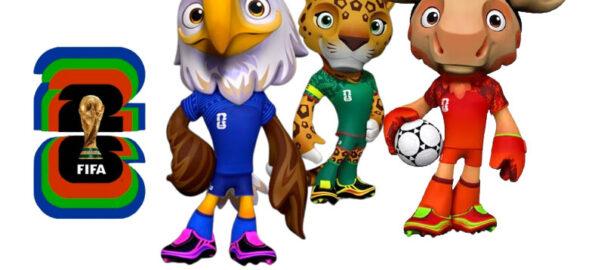Is a global football celebration complete without a mascot? For the 2026 edition, the answer comes in threes.
With the tournament expanding to 48 nations, the event will also feature three mascots for the three co-hosts. Each one embodies its country’s identity while playing its own special role on the pitch.
Canada is represented by a moose, Mexico by a jaguar, and the United States by a bald eagle. Together, Maple, Zayu, and Clutch aim to connect culture, tradition, and sport.
Maple the goalkeeper of Canada
Maple, wearing the number 1 shirt, is a moose symbolizing Canadian heritage. His outfit and name highlight some of the country’s most recognizable elements.
According to the description, Maple roams from coast to coast, uniting communities while reflecting the culture of the nation.
While Canada’s men’s team is better known for attack-minded players such as Alphonso Davies and Jonathan David, Maple’s antlers suggest he can cover plenty of space at the back.
Zayu the forward from Mexico
Mexico’s representative is Zayu, a jaguar in the number 9 jersey. Found mainly in the southern regions, the animal carries deep significance for ancient cultures of the country.
Zayu embodies celebration, from cuisine and dance to tradition, creating bonds that stretch beyond borders. His presence mirrors the country’s passion and pride.
Just like legendary strikers such as Javier Hernández, Cuauhtémoc Blanco, and Raúl Jiménez, Zayu leads the line with flair.
Clutch the playmaker of the United States
Clutch, a bald eagle with the number 10, fills the role of midfield organizer. The character is tied to exploration, adventure, and optimism, soaring across the vast United States while embracing different communities and games.
For American supporters, that shirt is strongly linked with Christian Pulisic, who carries the nation’s hopes heading into 2026. Clutch, too, is cast as the creative force in the middle of the field.
Looking back at past mascots
Mascots became a feature of the men’s World Cup in 1966, when England introduced World Cup Willie, a lion in a Union Jack shirt. Each edition since has created a character inspired by its host nation.
Juanito, a sombrero-wearing boy, was unveiled in Mexico in 1970, while West Germany brought Tip and Tap, two children in uniform, for 1974. Argentina presented Gauchito in 1978, a cartoon gaucho, and Spain followed with Naranjito, a cheerful orange, in 1982.
Mexico hosted again in 1986 with Pique, a jalapeño in traditional attire. Italy introduced the abstract figure Ciao in 1990, and the United States revealed Striker the dog in 1994. France continued in 1998 with Footix, a rooster in national colors.
South Korea and Japan, the first co-hosts, created Ato, Kaz, and Nik in 2002, futuristic figures known as Spheriks. Germany introduced Goleo VI and his talking football Pille in 2006. South Africa had Zakumi the leopard in 2010, and Brazil brought Fuleco the armadillo in 2014.
Russia’s choice in 2018 was Zabivaka the wolf, while Qatar presented La’eeb in 2022, a playful character resembling a traditional headpiece.
